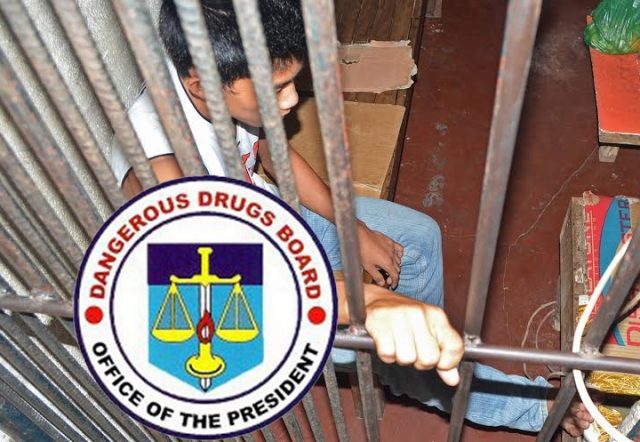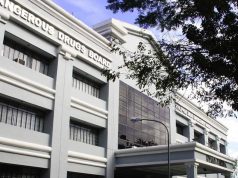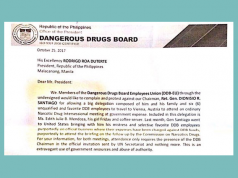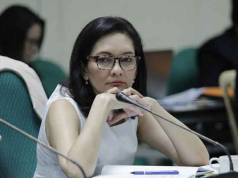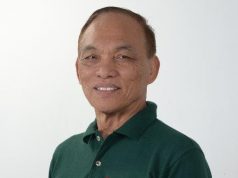MANILA – Dangerous Drugs Board (DDB) Chairman Benjamin Reyes revealed on Friday that his agency is in the process of drafting a new document that would harmonize the strategies of the various government entities combating the illegal drug problem.
“We need to look at the establishment and institutionalization of systems rather than focusing on the numbers of activities. We need to determine the impact of our existing processes and provide measurable indicators to determine progress,” Reyes said during a drug policy forum dubbed “Drug Issues, Different Perspectives” held at the University of the Philippines in Diliman, Quezon City.
“And so we’ve decided that we need to revise the previous National Anti-Drug Strategy Plan of Action,” he added.
Dangerous Drugs Board Chairman Benjamin Reyes: We need to revise and overhaul the overall strategy plan since it had not foreseen the problems that the Duterte administration encountered in its ongoing war on drugs.
The working title of the document, according to Reyes, is the Philippine Anti-illegal Drugs Strategy or PADS.
The current blueprint strategy of the DDB is called the National Anti-Drug Strategy Plan of Action 2015-2020 (NADPA), which was created during the previous administration.
Reyes explained that there was a need to revise and overhaul the overall strategy of the DDB based on the the NADPA since it had not foreseen the problems that the Duterte administration encountered on its ongoing war on drugs.
“We experienced a surge of surrenderees, and so we were faced with a situation where there is this demand for services but almost none to be accessed. So, we need to revise the overall strategy,” he said.
The new document, Reyes explained, would address these kinds of lapses or oversights.
He also said that NADPA was not in alignment with other development blueprints of President Rodrigo Duterte, such as the National Security Policy and the National Health Development Agenda.
Reyes said the new anti-illegal strategy plan would also expand the provision of services by the government and would clearly define the role of respective government agencies in the drug campaign.
“We hope it would rationalize everything and provide us with the means to also control some of the erring agencies doing what they are not supposed to do,” he said.
Reyes said the new document would also consider drug addiction as both a health issue and as a peace and order one.
“We need to have balanced approaches both on the side of the enforcement and on the side of the health and social development,” he said.
He said the document is set to be presented to the president and the cabinet secretaries next week. And, if approved, the DDB chair hopes implementation could start by June or July.
Data on war on drugs questioned
Also, during the forum, Reyes presented the data on Philippine drug situation, reiterating that based on the 2015 DDB survey, there were 1.8 million drug users in the country, even as other intelligence reports suggested a figure of four million users.
Reyes clarified the number of deaths being linked to police operations and to extra-judicial killings, pointing out that, out of 53,504 drug operations conducted, only 2,692 persons have died, while the rest were reported deaths considered homicide cases under investigation.
However, some of the attendees who were members of the academic community and welfare organizations questioned the figures presented by the official.
During the open forum, Reyes was asked about how the number of drug users in the Philippines compared with other countries.
This question was related to a comment by Dr. Carl Hart, a neuropsychopharmacologist at Columbia University, during a separate press briefing: “The striking things about those data was that the PH drug using rates are generally lower than other nations and the people who have actual problems in drugs.” he said.
“Question is: why do you have intensified efforts vs drugs when you have data presented today that looks like its not really a major problem?” Hart added.
Reyes, in his reply, acknowledged that the statistics on the Philippines is still considered below the world’s drug prevalence rate.
However, he said that there was still a need to address the illegal drug problem despite the country’s global standing since politicians are also being involved in illegal drug trade and the increasing trend on the number of drug users.
“We also have no support structures in place that’s why president wants this to be addressed,” he said.
Another attendee also raised concern that DDB’s proposed strategy document seemed to have a disconnect with how the administration conducts the war on drug.
Reyes assured that the president would support DDB’s new proposed strategy as he had already agreed on a number of anti-illegal drug programs that is balanced and holistic.

